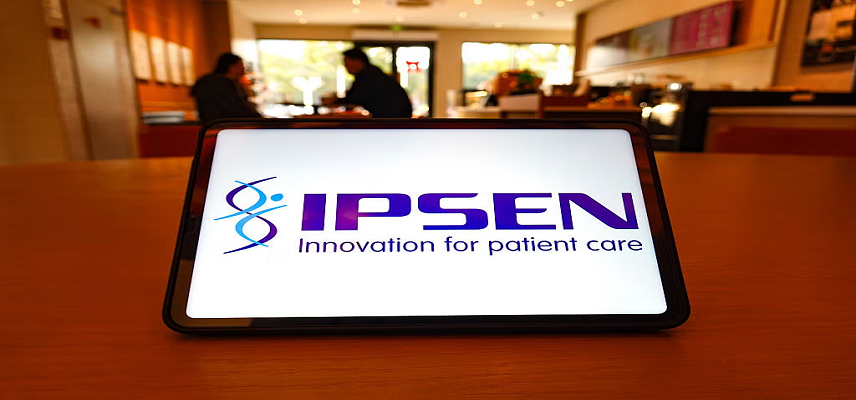AstraZeneca and Merck announce positive results from phase 3 PAOLA-1 and SOLO-1 trials of Lynparza in combo with bevacizumab to treat first line advanced ovarian cancer
AstraZeneca and Merck, known as announced long-term follow-up results from the phase 3 PAOLA-1 and SOLO-1 trials in first-line advanced ovarian cancer, which represent the longest-term data for any PARP inhibitor in this setting. These results were presented on September 9 at the European Society for Medical Oncology (ESMO) 2022 Congress, and the SOLO-1 results were published in the Journal of Clinical Oncology. Ovarian cancer is one of the most common gynaecologic cancers and has the worst prognosis and highest mortality rate. More than two-thirds of patients with ovarian cancer are diagnosed with advanced disease, and approximately 50-70% of these patients die within five years. Roughly half of patients with advanced ovarian cancer have homologous recombination deficiency (HRD)-positive tumours, including those with a BRCA mutation, and one in four women have a BRCA mutation. The phase 3 PAOLA-1 trial evaluated Lynparza in combination with bevacizumab as first-line maintenance therapy in patients with advanced ovarian cancer, who were without evidence of disease after surgery or following response to platinum-based chemotherapy. Final overall survival (OS), a key secondary endpoint, in those who received Lynparza plus bevacizumab was 56.5 months versus 51.6 months with bevacizumab alone (HR=0.92 [95% CI, 0.76-1.12]; p=0.4118) in patients with newly diagnosed advanced ovarian cancer. These OS results were not statistically significant. In an exploratory subgroup analysis of HRD-positive patients, Lynparza plus bevacizumab provided a clinically meaningful improvement in OS, reducing the risk of death by 38% (HR=0.62 [95% CI, 0.45-0.85]) versus bevacizumab alone. 65.5% of patients who received Lynparza plus bevacizumab were still alive at five years versus 48.4% who received bevacizumab alone. Lynparza plus bevacizumab also improved median progression-free survival (PFS) to nearly four years (46.8 months) versus 17.6 months with bevacizumab plus placebo, and 46.1% of patients who received Lynparza in combination with bevacizumab remain progression free versus 19.2% of patients who received bevacizumab alone. The safety and tolerability profile of Lynparza in this trial was in line with that observed in prior clinical trials, with no new safety signals. Adverse events of special interest for Lynparza in combination with bevacizumab versus bevacizumab alone included myelodysplastic syndrome/acute myeloid leukaemia/aplastic anaemia (1.7% vs. 2.2%), new primary malignancies (4.1% vs. 3.0%) and pneumonitis/interstitial lung disease/bronchiolitis (1.3% vs. 0.7%). The phase 3 SOLO-1 trial evaluated Lynparza as monotherapy as first-line maintenance therapy in patients with advanced ovarian cancer, who were without evidence of disease after surgery or following response to platinum-based chemotherapy. In the trial, Lynparza demonstrated a clinically meaningful improvement in OS versus placebo in patients with germline BRCA-mutated (gBRCAm) newly diagnosed advanced ovarian cancer, reducing the risk of death by 45% (HR=0.55 [95% CI, 0.40-0.76]; p=0.0004) versus placebo (not statistically significant). Median OS was not reached with Lynparza versus 75.2 months with placebo. At the seven-year descriptive OS analysis, 67% of Lynparza patients were alive versus 47% of placebo patients (44% of whom had a subsequent PARP inhibitor), and 45% of Lynparza patients versus 21% of placebo patients were alive and had not received a first subsequent treatment. Additional data showed median time to first subsequent therapy (TFST) was 64.0 months with Lynparza versus 15.1months with placebo. The safety and tolerability profile of Lynparza in this trial was in line with that observed in prior clinical trials, with no new safety signals. The most common treatment-emergent adverse events (=20%) were nausea (78%), fatigue (64%), vomiting (40%), anaemia (40%), diarrhoea (35%), arthralgia (29%), constipation (28%), abdominal pain (26%), headache (23%), neutropenia (23%), dysgeusia (22%), dizziness (20%) and decreased appetite (20%). Professor Isabelle Ray-Coquard, principal investigator from the PAOLA-1 trial and president of the GINECO group said,

Optimize Your trial insights with Clival Database.
Are you exhausted from the uncertainty of trial insights pricing? Clival Database ensures the clarity in the midst of the global scenario for clinical trials to you.Clival Database is one of the best databases that offers an outstanding number of clinical trial data in terms of 50,000+ molecules and from primary regulatory markets as well as new entrants like Indian and Chinese markets.
With Clival, you get accurate positioning of historical sales data, patent database, company profiling, safety & efficacy, and prediction of launch of new innovative molecules helping you to align your research and driving down the cost.
To add value, we further break down our analytics for you so that improving your operational effectiveness; optimizing your clinical trials; and offering you accurate and high-quality data at lowest possible prices becomes possible.
Elevate your trial success rate with the cutting-edge insights from Clival database.
Check it out today and make more informed sourcing decisions! Learn More!







